Tabletop Otaku: Arcade Card Games in Japan
August 30, 2016 by dracs
Hey everyone! After a year and a half living in Japan I'm finally able to share with you some of my experiences of gaming out here. So welcome to Tabletop Otaku, where I will hopefully get to look at some of the weird, wonderful (but mostly weird) stuff that goes on here in the Land of the Rising Sun.
First up, let's check out a particularly Japanese approach to card gaming. Combining them with arcades!
Game Center Geekery
The first thing you should know, a Japanese arcade is not like the small and often sad affair we might be used to from the seafronts of the UK. Rather they are glorious, over-the-top collections of games of all kinds, where plenty of Japanese people spend their free time.
They are also home to some of the most professional English translations ever.
A lot of Japanese people take their gaming at these places very seriously and going into one you will often find suited salary men queuing up to play their favourite game, with the rhythm game players in particular sometimes bringing their own drum sticks, special gloves or what have you (seriously, just type in Japanese Rhythm Game into YouTube to see some of the incredible skills some players have with these games).
Many of these games have online or network play, with occasional tournaments run by the game center, as well as associated collectibles and loyal fanbases. So it is that arcade gaming in Japan can be viewed as less of a casual distraction and more of an in-depth hobby..
Of course, on my first time to a game center my attention was immediately grabbed by one particular group of machines; the interactive card games
Collectable Cards Meet Arcades
While tabletop gaming in general isn't as big here as it is in the west, collectible card games are very popular. There are plenty of dedicated stores where people meet up and play, many of which even stock some cards in English. Therefore its a pretty easy to see why Japan thought to combine the two hobbies.
These games come in many different styles and formats, but in general they can be summed up like this. Players collect a deck of cards, dispersed randomly by the machine at each play through. These cards represent game assets and characters, which can then be used in the computer game itself.
Hitherto, I have been unable to play these due to the fact that my Japanese is... abysmal (my language gaffs include asking where my tomorrows should go, asking for a letter in my ramen and declaring myself an umbrella).
However, my friends Seb and Matt were kind enough to take me along and introduce me to three of the games.
Battleships & Samurai
The first game we looked at was the newest addition to the game center's selection, called Kantai Collection.
Kantai Collection is... well, it's very, VERY Japanese. It's a game about WWII battleships personified as Japanese school girls fighting weird, abyssal monsters that look like whales. Why? Because Japan has yet to find something it can't personify as a school girl.
Players collect cards, each one representing a character which they can use in the game itself by placing the cards in a scanner.
After assembling a team, they explore a large map in search of enemies. Engaging sees the players directing their team in fast paced naval combat, where careful maneuvering and timing are all important. The arcade machine itself uses a fun, ship-style interface to help give you the feeling of directing battleships. That happen to be Japanese school girls.
After each round, players can have the option to buy new cards for ¥100 (£0.74) each. These are completely randomised, with players trading their duplicates among themselves, but there is an option to "build a ship", where you input a recipe in the hopes of getting a specific card.
Of the three games I looked at, Kantai Collection seems to be the closest to a regular video game. It could function perfectly fine without the cards, but their implementation does add to the game and gives a cool look at how else the model of a collectible trading card game can be used.
Having said that, I will say that this game in particular left feeling a bit... for want of a better word, skeeved out. After all, you are playing as school girls blowing up whale monsters, which given Japan's track record with whales is not great. And did I mention that the girls' clothes gets torn, becoming more revealing as they take damage?
Moving on.
The next one my friends showed me was a strategy game called Sengoku Taisen.
Set in the Sengoku Jidai, the warring states period of Japanese history where we get all the coolest stories of samurai and ninja, players control large armies and attempt to lay siege to one another's fortresses. The twist here is that your troops are all stored on collectible cards.
Gameplay is simple. Each card has a points cost, allowing you to assemble your army according to the limitations of the scenario. You choose your troops and deploy them my placing the cards on the field in front of you. These then appear on the screen as animated figures.
Their position in the game all depends on the position of their cards. Troops are moved by moving the cards around the field, with special abilities and attacks being activated by positioning the card or covering it with your hand.
As with Kantai Collection, new cards are distributed randomly at the end of the game by the machine itself. You don't have to pay again for Sengoku Taisen, but at ¥600 (£4.49) it is more expensive to play in general. A particular feature I liked was that the game will occasionally reward you with digital cards. These can later be used by placing any other card face down on the battlefield to represent it.
The cards of Sengoku Taisen are far more integral to gameplay than those of Kantai Collection. Whereas Kantai's cards only featured artwork, Sengoku's also show their stats and detail their various abilities. The game is like a hybrid of collectible card game and tabletop strategy.
While played out on the tabletop, the action itself happens entirely on screen, which does speed up the action and make for some pretty intense situations, especially when playing online against a human opponent.
Lastly, we come to Code of Joker.
Code of Joker differs from the previous two in that it doesn't feature any physical cards. Nevertheless, I wanted to talk about it to give you a good idea of the variety of card style gaming that has been mixed with technology at Japanese game centers.
Code of Joker is technically referred to as a digital trading card game. The gameplay is closer to a more traditional trading card game than the previous two. Players draw cards from a deck and use them to summon monsters, cast spells, set traps, or whatever their strategy calls for, in order to damage the opponent.
The players choose a pair of characters to represent them in game. These function in a similar way to the concept of Planeswalkers in Magic the Gathering. Attacks are aimed at them, when they die you lose the game, but they have special abilities that charge up and can then be used to seriously mess with the other player.
Being entirely digital, this one wasn't quite as interesting as the other two, from a mechanics perspective. It looks and plays a lot like a fully animated Magic the Gathering or Yu-Gi-Oh video game, but it is noteworthy due to the fact that its online play style and popularity could represent a new aspect for collectible card gaming to explore. True, there are existing online card games, like Magic Online, but Code of Joker is particularly well polished and implemented, even if having to play it at a game center might be off putting for people in the west.
One interesting point, despite being digital, Code of Joker still allows for physical card trading with a machine set up so players can transfer data between their memory cards.
Most game centers feature a notice board where people can leave messages about what cards they have and what they are currently looking for.
A Glimpse Of The Future?
It was a lot of fun to finally experience a part of Japanese gaming that has previously been locked behind the language barrier, especially as these games are so different to anything we have back home. Seeing the different ways card gaming has been combined with technology got me thinking, could this be a possible future for tabletop gaming?
We have discussed before on the site various ways in which technology and tabletop gaming could be combined, and now I have found that many of the ways we talked about are already being used in Japanese arcades.
Sengoku Taisen is probably the best example of this as it does play out very similarly to a tabletop strategy game. Of course, things are somewhat simplified for the player. All the maths and randomisation is worked out by the computer, so there is no need for dice rolls or constantly looking up rules. It is still very much a video game, with not much room for scenario variation due to the limitations of the machine's set up. Nonetheless, I could see this being something tabletop gamers would take to, especially with the online aspect.
Just as long as we don't personify anything ridiculous as school girls. I mean, what next, tanks?
... God damn it Japan.
Thanks to Seb and Matt for taking me through this confusing side of Japanese gaming. If any of you guys want to see more about video gaming in Japan or watch a few Let's Plays, check out Seb's blog Identity Gaming where he raises money for the Alzheimer's Society.
Do you like the idea of combining card games and arcade machines? What bits of Japanese gaming life would you like to learn more about?
Supported by (Turn Off)
Supported by (Turn Off)
"[Japanese arcades] are glorious, over-the-top collections of games of all kinds..."
Supported by (Turn Off)









































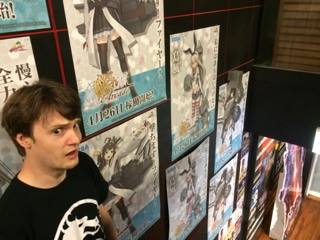
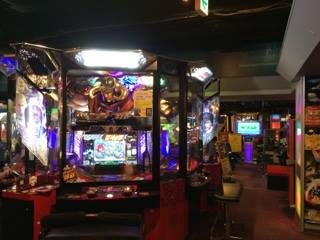
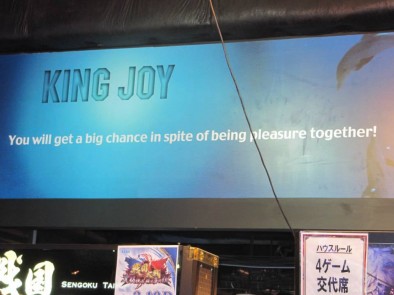


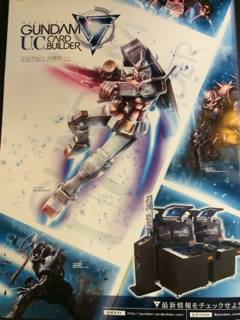
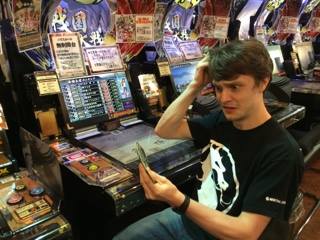
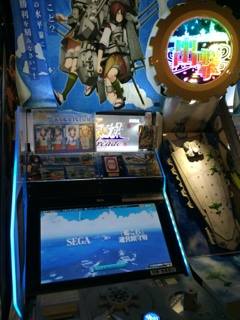
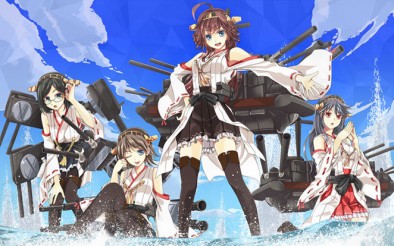
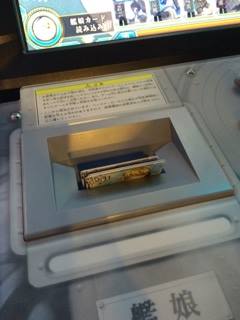
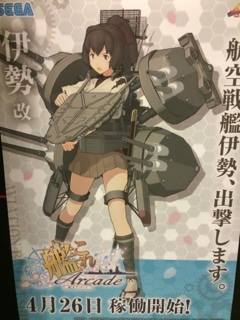

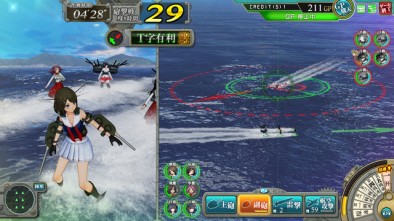

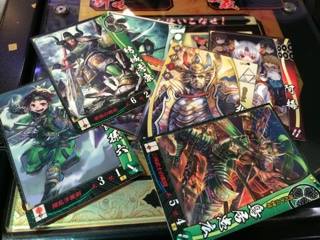
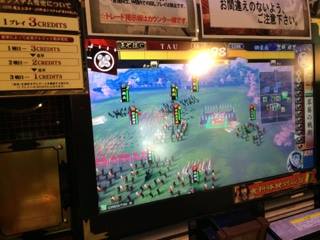
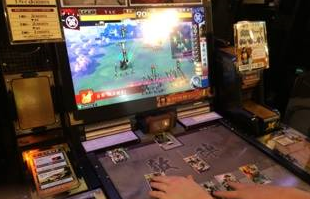


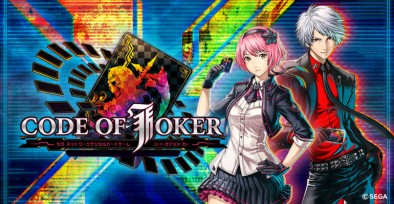
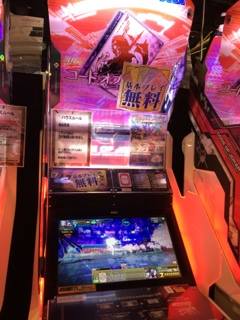
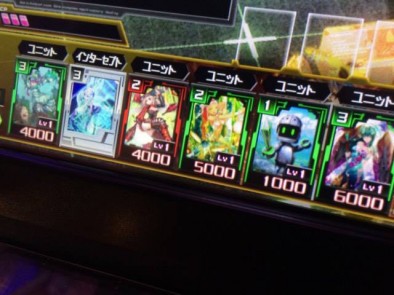

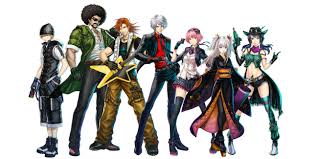
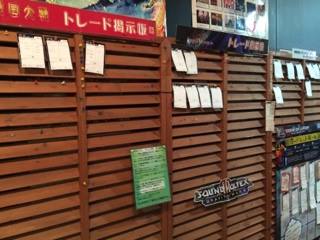
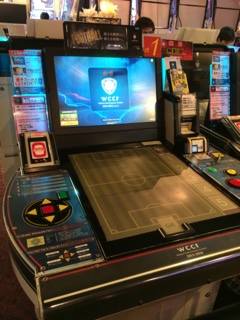
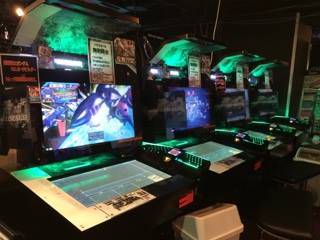






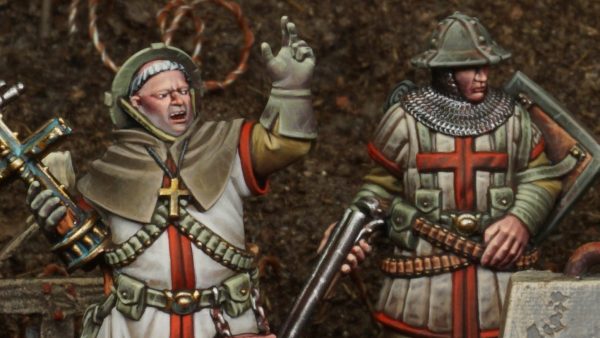

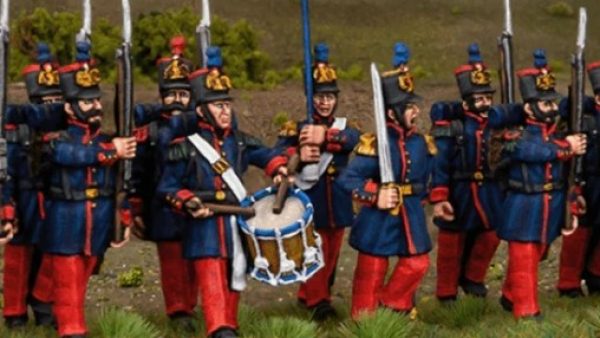


























He is back!!!
Awesome stuff, look forward to more things like this 🙂
Sengoku Taisen purely on the subject matter, looks the most appealing to me. I’m not a card player at heart and at first glance I don’t think the others would help scratch my gamers itch.
I need to throw dice and chat with my friends.
Hopefully there will be more articles Japan is such a fascinating country, somewhere I’ve wanted to visit for years.
It’s interesting that they haven’t made their way over here yet. Japanese video gaming and card game are both popular here. Maybe it’s the lack of communal video-gaming places to put one.
I guess we’re not too far away from the time where the card doesn’t just produce a 2D image on a screen, but a 3D hologram.
I would 100% back a 28mm schoolgirl/battleship miniature game on Kickstarter
one of the best articles in ages, love your humour Sam.
sengoku taisen is the one that should appeal.
but kantai collection , Warren if your reading I think we found the game to pitch to Ronnie .
there is now way that their passing up the opportunity to attack those school girls with giant squid tenticles .
What a good article, very interesting and entertainingly written.
Great article.
Interesting, funny and educational……..what a great article. Nice to see you back Sam, even if its just in writing!
nice read more please. articles about modeling and models itself?
Well done, Sam! That’s pretty cool stuff. I mean seriously, if people will plunk money into slot machines for a small chance to win something, why not have a go at a game like these where you literally end up with cards to take away? 🙂
Love Girls und Panzer. Although the girls are not personified tanks. The concept is that in an alternate timeline tank combat is a girls sport using something like sim rounds. Essentially it is the worlds best game of paint ball but with WW2 tanks. Makes a great premise for a light war game. Especially for something like Bolt Action where you could just make up any combination of tanks and use them.
Aye I know, John showed me a few episodes when I came home last Christmas.I just used it to illustrate the point and as a joke.
Ah Girls und Panzer, anime that rekindled my interest towards WWII era tanks and made me pick up FoW starter box. Interesting enough I also read manga version were main character role is given to military otaku girl (mangaka is military otaku himself) instead of girl who has background in tankery like in anime.
His hair! What happened to his beautiful, long hair?
Game of Thrones cut it off and it’s too hot here to grow it again.
I know, I miss it too.
always thought you were umbrellaish….good article , a whole world away from us I imagine.
That, unfortunately, is a true story.
@dracs A great article Sam and nice to see you back in action on the Beast of War site. i am fascinated by all things Japan so for me it was a great read with a cuppa. ive recently explored Anime for the first time as well and this schoolgirl obsession is sometimes hard to get to grips with.(not in a rude way either). what with the translation to English either subs or dubbed i find it off putting to say the least. Maybe its my western upbringing and the fact im an old fart that causes this? probably lol
Have you managed to look into other cultural or historical activities whilst there, sword making for instance or their ancient strongholds, folklore, im sure that those would make great future articles………… OK thats just my wish list but if you dont ask you dont get and im sure that there are many of us that would trade places with you in an instant just to experience what you are you lucky sod.
On a more serious note how goes the earthquake clear up in Japan, are things back to normal and whats it like living with the possibility of another always in the background?
It’s difficult to find places where traditional sword making is still practiced and while I’ve been to a number of castles most of the major ones are recreations, with a lot of the originals having been destroyed by bombing in WWII (my city, Nagoya, was almost entirely leveled by bombing runs). However, I do want to talk about folklore as it is something I am extremely interested in and has a good gaming angle given how much it inspires miniatures and games. Interestingly, one of the greatest Books on Japanese folklore, Kwaidan, was written by an Irish blok who is well known here but entirely forgotten back home.
As for the earthquakes, I spent my first month in terror of them, but in the end they happen to infrequently to stay scared. I’ve experienced maybe three, only two of which were large enough for me to notice. I narrowly avoided the Kumamoto one though as I had applied for a job right on the epicenter.
Sam San! Ogenki desu ka?
One thing REALLY strange i’ve found on my trip to tokyo was a shop that had (almost) ALL the cards for a particulare collectible card game unpacked, so you could buy exactly what u needed! Dunno if it was a case of that shop or a more common habit…
Hai genki desu, okagesamade
No that’s fairly common practice. I’m intending to do an article on card game shops.
@dracs
What do you mean “Game of Thrones” cut it off? Like did the cast show up on your door with scissors?
Does this mean you got to meet Lena Headey or Carice van Houten?
Kit Harrington
Sam i have request…
could you inquire if and how much tabletop rpgs are played in japan?
i mean Classic D&D or more likely Lodoss war ^^
Also classic wargaming like warhammer or infinity
Is there any resemblance of a gaming club?
The language barrier makes it difficult to delve into the Japanese rpg scene but I do want to try. As for miniature gaming that’s something mostly confined to groups established by foreign nationals.
I know! i’m a newbie. The grammar is actually pretty simple, the writing is a nightmare, and the fact that you have forms to say the same thing directly or formally is kinda alien.
Oh not to mention the fact that the same spelled word can have 2 VERY distinctive meanining (like Kumo wich stands for cloud or spider).
Still keeps fascinating me, kudos for your choice!
Obviously all my questions relate to:
Could i move in Japan as a rpg maniac, an hobby painter, casual wargamer and find nerds like me?^^
I agree about the grammer being simple, yet the writing being far more complex. When I got here i was going to learn Japanese officially, but to start the most basic book, I would need to learn all Katakana, Hiragana, and about 50 Kanji. So about a 150 “letter alphabet” to begin. I am learning unofficially while I get through that.
You can find nerds like you *co-and me-ugh*, in Japan, but does depend on where you are. In Nara there’s very little that i’ve seen. But Tokyo and Osaka have gaming clubs (mostly foreigners). Which, when I am more settled, I will be looking more into.
But in Nara you can have a full party of deers!^^
Really great article, looking forward to more like it. It’s so hard to sort out the difference between new trends with staying power and just gimmicks. I like your take on it from the comparison of the three games. There is a definite tipping point, figuring our where that point is, however, is hard.
I have seen just recently some videos of some card insert games and thought it odd. It’s nice to see this covered as I know very little about them but could see myself enjoying playing some of them.
The whales represent the US Navy in WWII.
And very good article. Please continue.
I am not much of a card player, but still interesting article. Thank you for sharing 🙂 @sam will you join the weekender from time to time? Perhaps you can share some screen space with Big Ben 🙂
Really fascinating article, and great to hear from you Sam!
I’ve never been into collectible card games much, and everything you’ve described about the scene, the themes, the seriousness of the hobby, etc. all sound really offputting to me, but it’s still really interesting to get a gamer’s perspective on gaming in another culture.
Considering the dismal record of Nipponese battleships & battlecruisers, and given that no U. S. battleship was ever sunk other than by a sneak attack, the game developers would do well to base their characters on American battlewagons.